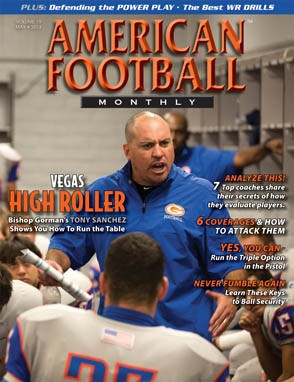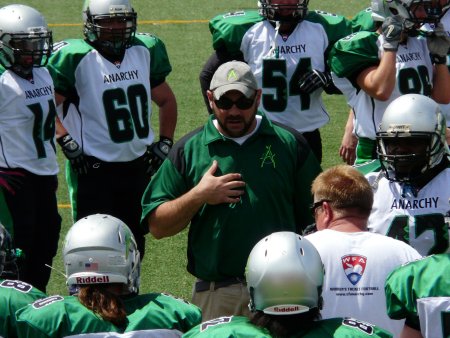Article CategoriesAFM Magazine
|
Letter from AFM – Breaking Barriersby: John GallupEditor and Publisher © More from this issue Breaking Barriers There are big plays and big hits. Coaches roam the sidelines and bark instructions to players. Team names are intimidating – Sharks, Fury, Mayhem – and sometimes politically incorrect, like the Assassins. The competition is intense. It’s only when you hear a fan shouting the rallying cry, “Let’s Go, Ladies!”, that you realize that this is a different league altogether. It’s football for women, and they’re wearing helmets, pads and uniforms – not lingerie. It’s obvious that these women are passionate about what they’re doing. “They have the love of the game in their hearts,” according to Michael Winters, head coach of the Orlando Anarchy. “Most of these women have been told, at some point in their lives, that they couldn’t play football. With this league, they can. We just try to make it fun.” It may be fun, but it’s also serious football. The Anarchy are part of the Women’s Football Alliance, which has become, in its fourth season, the largest women’s tackle football league ever with over 60 teams and counting. The level of skill is surprisingly good.
Coach Michael Winters with the Orlando Anarchy The WFA is divided into divisions of four or five teams that are located close to each other in order to save on travel expenses. The financial burden of outfitting and running a football franchise can be heavy – players are responsible for paying for their own equipment in most cases. There are signs, however, that interest in women’s football is growing. New teams are entering the league, sponsorship is increasing and attendance is up. The Pittsburgh Passion, co-owned by NFL Hall-of-Famer Franco Harris, attract close to 5,000 spectators for their home games, which are televised regionally. The 2012 WFA championship game was played in Pittsburgh’s Heinz Field. The Orlando Anarchy players were the subject of a documentary, “Gridiron Girls”, which debuted last fall. The Anarchy, like most WFA teams, are an eclectic bunch. There are teachers, administrators, law enforcement officers and stay-at-home moms. They range in age from 20-something to over 50. Many are the primary earners in their households, which limits the amount of time they can devote to team activities and practice. What they share is a commitment to football and a passion for suiting up and hitting every week. That commitment means a lot to Winters, who has coached a high school boys team and is now in his third season with the Anarchy. When asked what the difference is between coaching male and female athletes, he is quick to answer. “Women take the game more seriously,” he says. That’s evident when you look at the pre-game warm ups, the rituals and the game faces that indicate that, for these women, football is much more than a weekend hobby. The success of the WFA, along with the growth of high school girls’ flag football, is an indication of a changing gender landscape in football. Don’t be surprised to see more and more girls trying out for boys football teams as more barriers are broken. |
|
| HOME |
MAGAZINE |
SUBSCRIBE | ONLINE COLUMNISTS | COACHING VIDEOS |
Copyright 2025, AmericanFootballMonthly.com
All Rights Reserved





